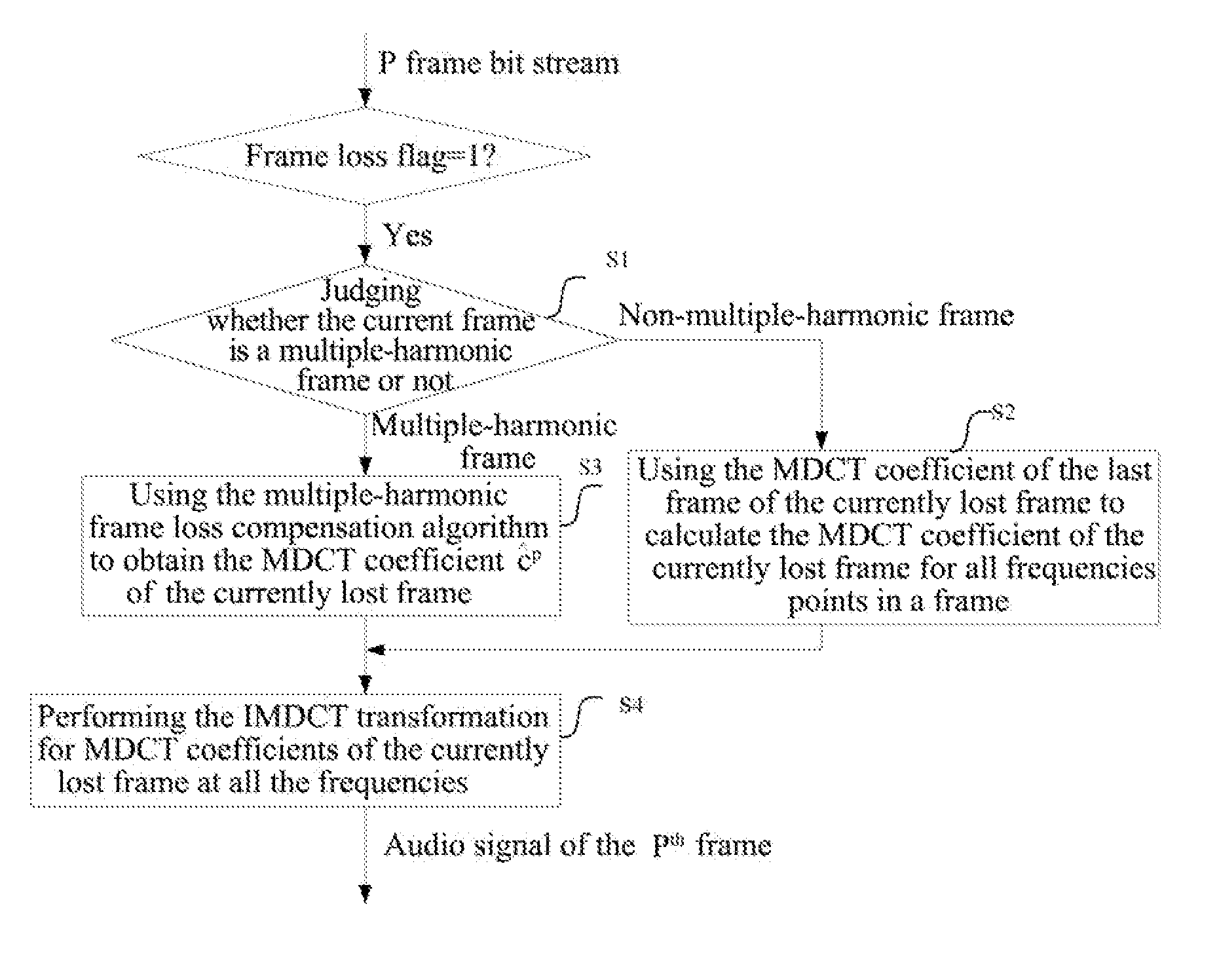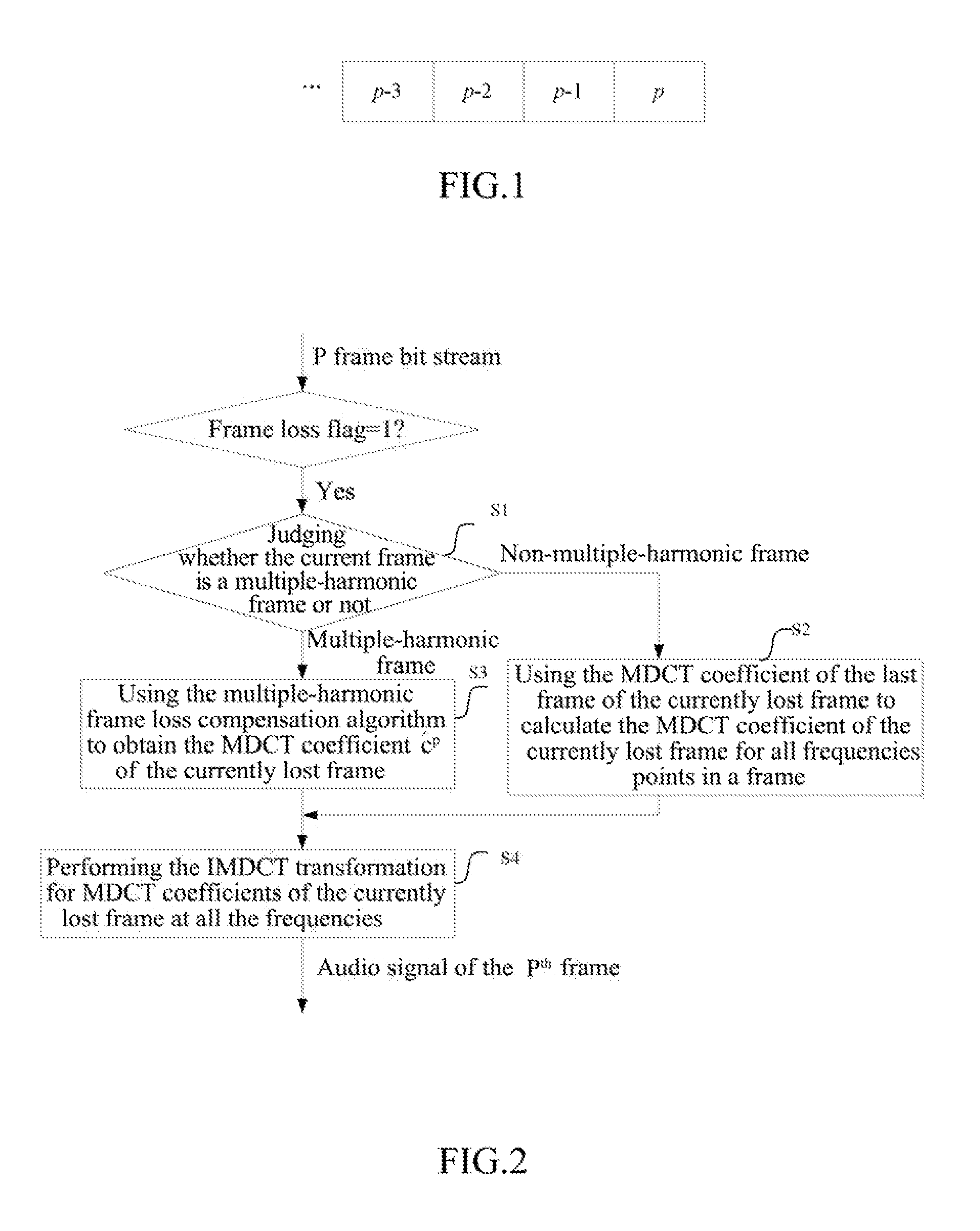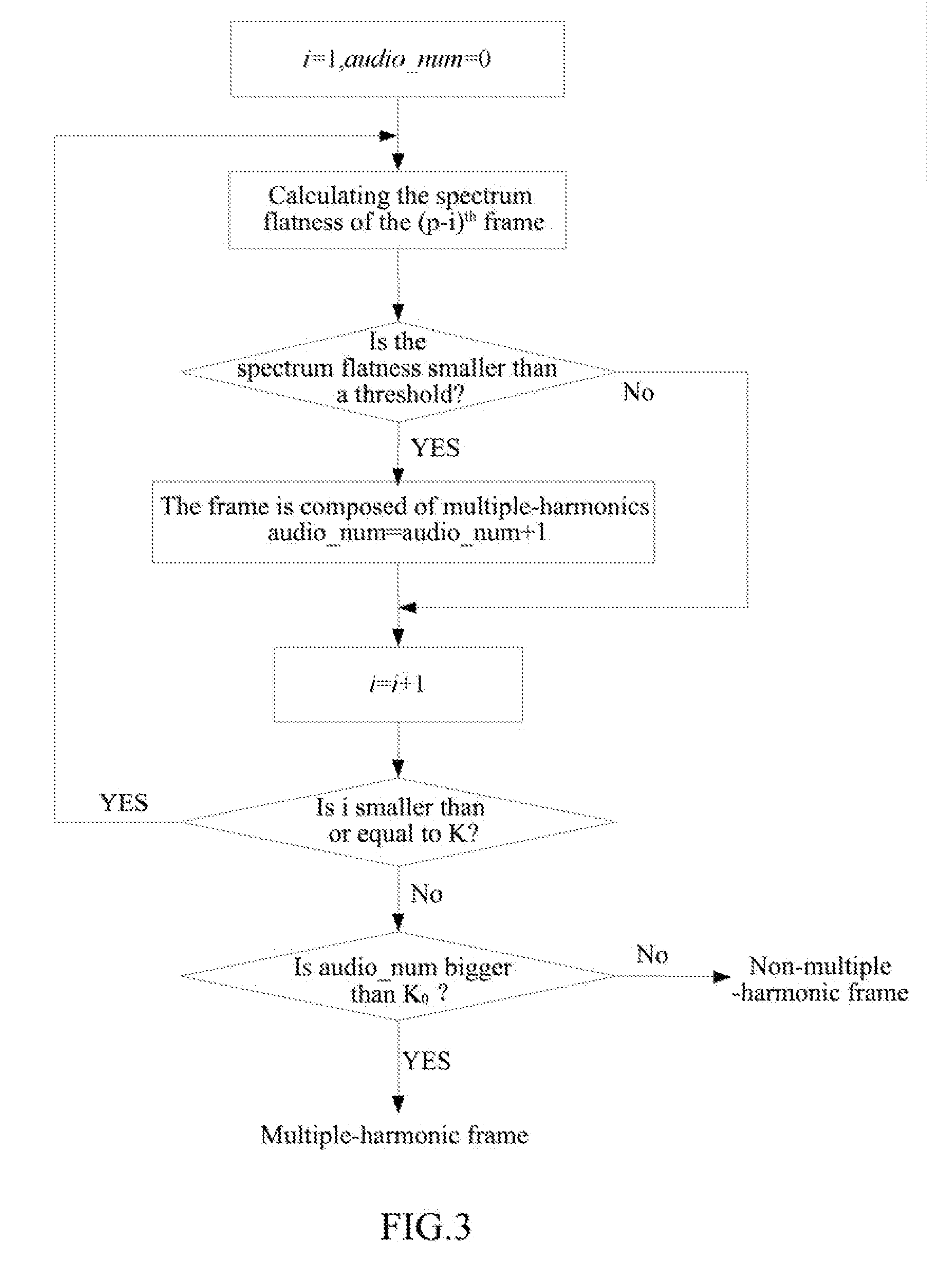Compensator and Compensation Method for Audio Frame Loss in Modified Discrete Cosine Transform Domain
a compensation method and cosine transform technology, applied in the field of audio decoding, can solve the problems of large memory expense, high complexity of methods, and reduced quality of synthetic voice and audio at the decoding end, and achieve the effects of small amount of calculation, no delay, and small volume of memory spa
- Summary
- Abstract
- Description
- Claims
- Application Information
AI Technical Summary
Benefits of technology
Problems solved by technology
Method used
Image
Examples
example 1
[0099]Step 110, a decoding end judges whether the current frame (i.e. currently lost frame) is a multiple-harmonic frame (for example, a music frame composed of various harmonics) or not when detecting data packet loss of the current frame, and performs step 120 if the current frame is a non-multiple-harmonic frame, or else, performs the step 130.
[0100]The specific judging method is:
[0101]calculating the spectrum flatness of 10 frames before the currently lost frame, and considering the frame to be a multiple-harmonic steady state signal frame when the spectrum flatness is smaller than 0.1; if more than 8 frames in the 10 frames before the lost frame are multiple-harmonic steady state signal frames, considering the currently lost frame to be a multiple-harmonic frame, or considering the currently lost frame to be a non-multiple-harmonic frame. The method for calculating the spectrum flatness is as follows:
[0102]the spectrum flatness of the ith frame SFMi is defined as the ratio of t...
example 2
[0121]Step 210, a decoding end judges whether the current frame (i.e. currently lost frame) is a multiple-harmonic frame (for example, a music frame composed of various harmonics) or not when detecting data packet loss of the current frame, and performs step 220 if the current frame is a non-multiple-harmonic frame, or else, performs the step 230.
[0122]The specific method for judging whether the currently lost frame is a multiple-harmonic frame or not is:
[0123]calculating the spectrum flatness of 10 frames before the currently lost frame, and for each frame, considering the frame to be a multiple-harmonic steady state signal frame when the spectrum flatness is smaller than 0.1; if more than 8 frames in the 10 frames before the lost frame are multiple-harmonic steady state signal frames, considering the currently lost frame to be a multiple-harmonic frame, otherwise considering the currently lost frame to be a non-multiple-harmonic frame. Wherein, the calculating method of the spectr...
PUM
 Login to View More
Login to View More Abstract
Description
Claims
Application Information
 Login to View More
Login to View More - R&D
- Intellectual Property
- Life Sciences
- Materials
- Tech Scout
- Unparalleled Data Quality
- Higher Quality Content
- 60% Fewer Hallucinations
Browse by: Latest US Patents, China's latest patents, Technical Efficacy Thesaurus, Application Domain, Technology Topic, Popular Technical Reports.
© 2025 PatSnap. All rights reserved.Legal|Privacy policy|Modern Slavery Act Transparency Statement|Sitemap|About US| Contact US: help@patsnap.com



